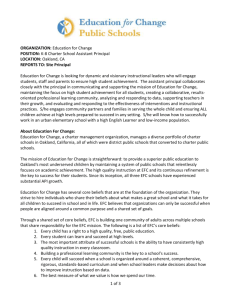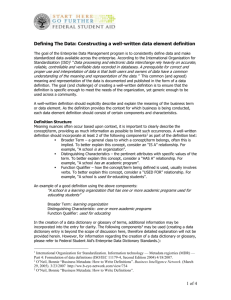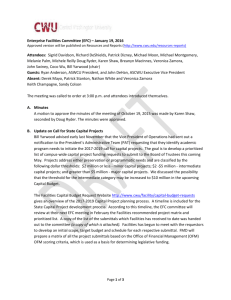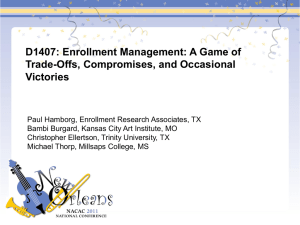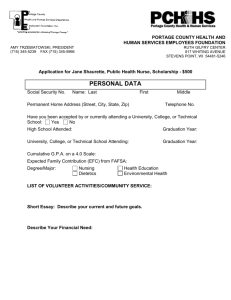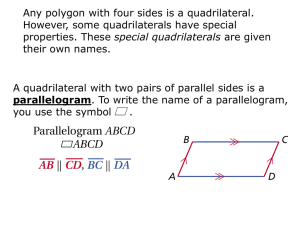REMEMBER EFC?????? - Society of Aviation and Flight Educators
advertisement
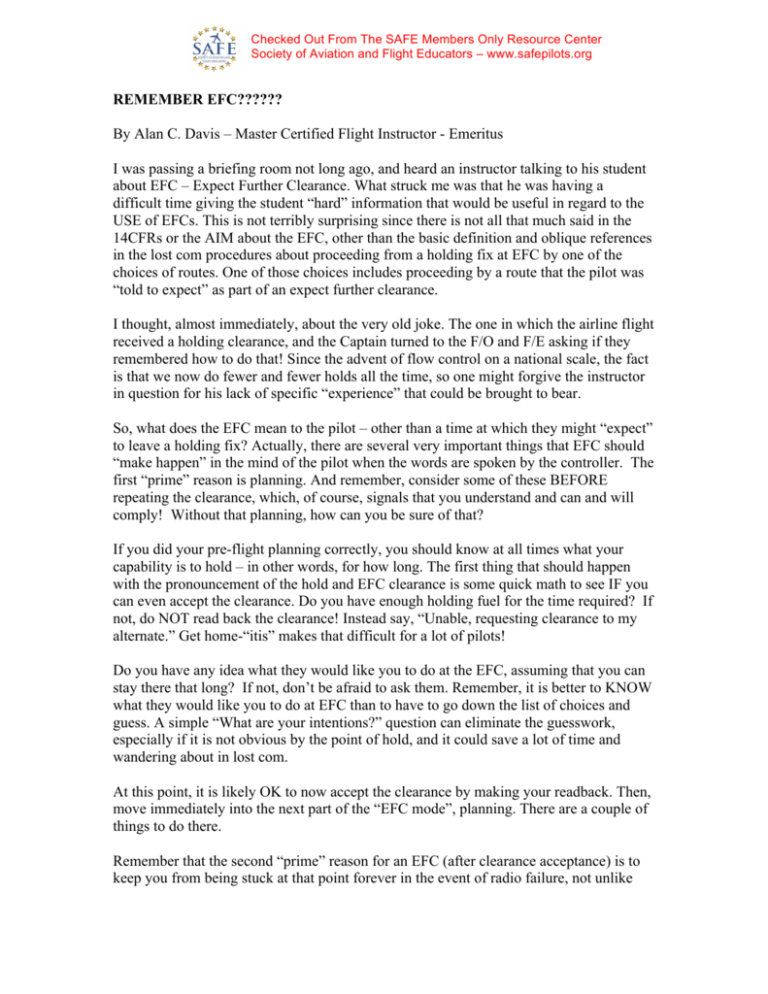
Checked Out From The SAFE Members Only Resource Center Society of Aviation and Flight Educators – www.safepilots.org REMEMBER EFC?????? By Alan C. Davis – Master Certified Flight Instructor - Emeritus I was passing a briefing room not long ago, and heard an instructor talking to his student about EFC – Expect Further Clearance. What struck me was that he was having a difficult time giving the student “hard” information that would be useful in regard to the USE of EFCs. This is not terribly surprising since there is not all that much said in the 14CFRs or the AIM about the EFC, other than the basic definition and oblique references in the lost com procedures about proceeding from a holding fix at EFC by one of the choices of routes. One of those choices includes proceeding by a route that the pilot was “told to expect” as part of an expect further clearance. I thought, almost immediately, about the very old joke. The one in which the airline flight received a holding clearance, and the Captain turned to the F/O and F/E asking if they remembered how to do that! Since the advent of flow control on a national scale, the fact is that we now do fewer and fewer holds all the time, so one might forgive the instructor in question for his lack of specific “experience” that could be brought to bear. So, what does the EFC mean to the pilot – other than a time at which they might “expect” to leave a holding fix? Actually, there are several very important things that EFC should “make happen” in the mind of the pilot when the words are spoken by the controller. The first “prime” reason is planning. And remember, consider some of these BEFORE repeating the clearance, which, of course, signals that you understand and can and will comply! Without that planning, how can you be sure of that? If you did your pre-flight planning correctly, you should know at all times what your capability is to hold – in other words, for how long. The first thing that should happen with the pronouncement of the hold and EFC clearance is some quick math to see IF you can even accept the clearance. Do you have enough holding fuel for the time required? If not, do NOT read back the clearance! Instead say, “Unable, requesting clearance to my alternate.” Get home-“itis” makes that difficult for a lot of pilots! Do you have any idea what they would like you to do at the EFC, assuming that you can stay there that long? If not, don’t be afraid to ask them. Remember, it is better to KNOW what they would like you to do at EFC than to have to go down the list of choices and guess. A simple “What are your intentions?” question can eliminate the guesswork, especially if it is not obvious by the point of hold, and it could save a lot of time and wandering about in lost com. At this point, it is likely OK to now accept the clearance by making your readback. Then, move immediately into the next part of the “EFC mode”, planning. There are a couple of things to do there. Remember that the second “prime” reason for an EFC (after clearance acceptance) is to keep you from being stuck at that point forever in the event of radio failure, not unlike Charlie on the MTA (for those of us old enough to remember the song). We often do not wind up being there all the way to EFC, which can also make us a bit complacent, so keep your ears peeled for radio traffic on the frequency. Unless you are out in “Lonelyville”, you should hear traffic and you should hear what they are doing with those ahead of you when they are released from the hold – and when. If you ARE the only one there, just listen for other traffic on the frequency. If it is getting toward the EFC – perhaps a few minutes prior – and you have not heard anything on the frequency lately, you might just see if they are still there, and if the EFC time is still good. This will often result in a clearance at that point. Why wait UNTIL the EFC to discover a com loss – or have your EFC extended? Keep in mind that time planning may well be required, especially if there is a com failure. PLAN for it (both the potential failure and the timing) rather than being surprised. Remember that you are expected to LEAVE the holding fix AT the EFC and proceed. Seldom do those on the ground do a lot of math to make the holding pattern and EFC time come out just right. So, know what you must DO as EFC approaches. If it looks like you will cross the holding fix this time 3 minutes before the EFC, and you don’t get a radio response to your “check-in” call, what do you then have to do?? The two turns are one minute each, totaling two, so the legs cannot exceed 30 seconds each in order to leave the hold AT EFC. Sound familiar? In addition, don’t wait until EFC to determine which of the priority list will be the route that you will need to fly in the event that you get to EFC and have lost com. It gives you something to do IN the hold, besides navigate, time, etc., and you should NOT need to make that decision AT EFC. Why not? If you actually have a com failure, what is likely to be going on at that point? Be honest. First is a little disbelief, accompanied by some quick frequency changing – which should have been going on in the hold and before the EFC! Next is a mild case of the “this can’t be happening to me” panic, despite what all the other “fearless” aviators might tell you when swapping lies. And then, along with the greater workload comes “doubt”. That is one of the biggest killers of pilots! At the very least, it can make you flog around the skies in IMC changing headings because you are not sure you “have it right.” At the worst, it can make you fly into something that can ruin your entire day! Though we don’t actually hold that much, and seldom get all the way to EFC, it is not a bad idea to review that which we don’t use a lot to keep it current. Think of it like a computer. Things that you have done or reviewed recently are more easily recalled (as in the RAM memory of a computer) than those that we have not used recently (as in the hard drive memory of a computer which requires more searching to locate/remember – like the library stacks). And, if we have reviewed them recently, we are most likely to recall them correctly, rather than in one of the incorrect forms we might have done once while in training. The same principle applies to anything that we have not done recently. That is why I get my 14CFRs out regularly and READ parts that apply to things I don’t do all the time. Do you READ those 14CFR revision pages when you put them in, or just stuff them in your book? If you are a ME IFR pilot, how long has it been since someone “pulled” an engine on you, either VFR or, perish the thought, in simulated IMC - 2 minutes before the EFC? But then that is another story. **************************************** This article is provided to the SAFE library by Alan C. Davis – Master Certified Flight Instructor – Emeritus for the use of other instructors and pilots. Alan Davis can be contacted at rakenjake2@hypercon.net.
